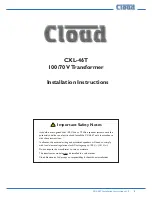
P26 Instruction Manual
14
Zero-point calibration cycle
External influences such as temperature, position or ambient pressure can shift the instrument’s
zero-point, i.e., the value displayed when the pressure ports are open. During calibration, the
instrument automatically calculates this shift and takes it into account during the zero-point
calibration. The zero-point calibration takes place in two steps, which are shown in the top line
of the display (optional).
“
0” Measuring signal of the zero-point is being determined.
“
P” Pressure is being reconfigured
The interval between two zero-point calibrations can be adjusted in the Settings menu.
Zero-point calibration can also be started with the Enter key if the device is in Measurement
mode.
The P26 does not respond to keys being pressed during calibration.
4.1 External zero-point calibration (optional)
External zero-point calibration is also available (optional). In this version, there is an additional
contact on the output connector. To initiate a zero-point calibration, this connection must be
connected briefly with +24 V.
INFORMATION!
If a zero-point calibration is initiated via the serial interface or the external zero-point
calibration input, this will still be carried out.
In this case, it doesn’t matter if the zero-point
calibration is deactivated or the P26 is in the menu.
Overpressure protection
The P26 has an internal overpressure safeguard that protects the precision pressure
measurement capsule from damage. (Overload range: 200 x [max. 600 kPa])
Display (optional)
The measured values and the menu are shown on the display. The top line is the information
line. This line displays the type of measured value or the status of a zero-point calibration. The
measured value is displayed in the middle line. If the permitted measuring range is exceeded or
not reached, the figures are replaced by '-' characters. The bottom line displays the unit, with the
first two digits showing the status of the two relays.















































